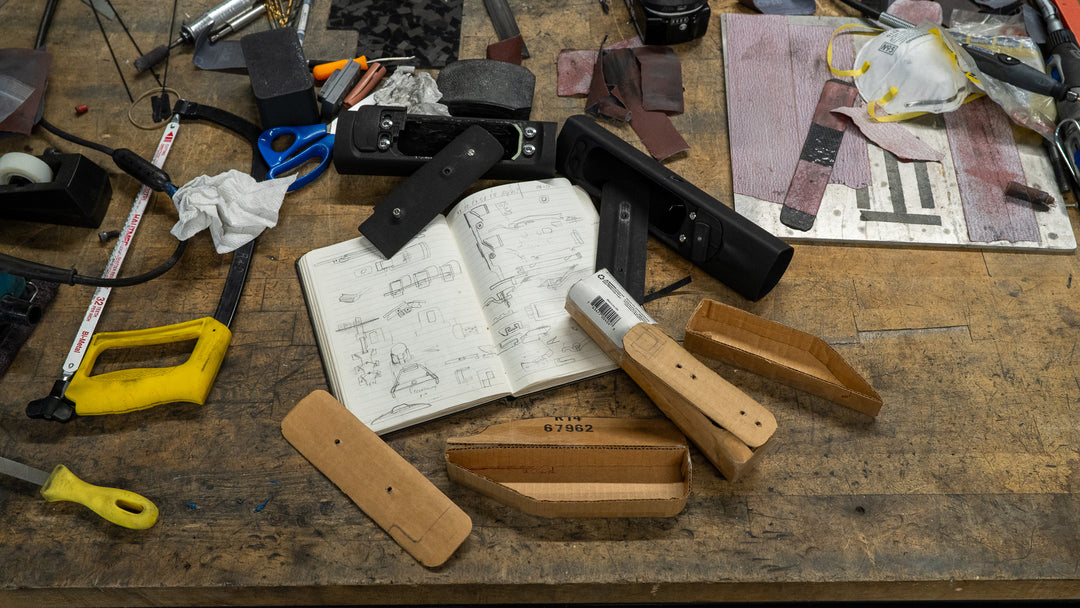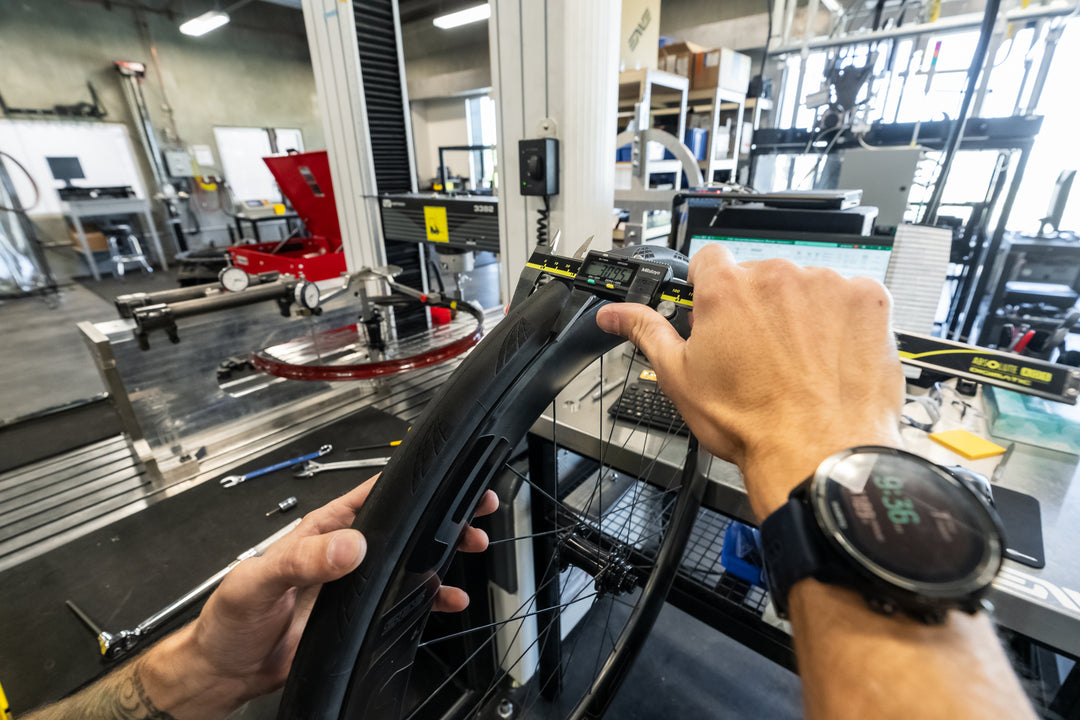HOW WIDE AND FAST BECAME THE NORM
When a rider takes a solo flier in a race, it may seem like a foolish idea — until the move sticks, and the rider wins.
When ENVE launched the SES 4.5 AR wheels back in 2016 as an aero wheel designed specifically to be ridden and raced on a variety of surfaces with wide, tubeless tires, no one else was doing it. No one else was thinking about it. ENVE was way off the front, alone.
Fast forward to today, and any performance wheel on the market without a wide, tubeless design and refined aerodynamics is clearly well off the back.
Funny what the perspective of time will do.




Today, ENVE has a full complement of four models in the Smart ENVE System line-up — SES 2.3, SES 3.4, SES 4.5, and SES 6.7 — each designed to help any rider go faster with more confidence, more comfort, and more efficiency.
Each SES wheelset features ENVE’s hallmark designs, including front- and rear-specific aerodynamic shaping, Wide Hookless Bead technology for pinch-flat prevention, and internal rim widths optimized for riding style.
Blast From the Past



Today, gravel and all-road riding constitute so much of the riding that many of us do. And as such, having wheels with wide rims that support efficient, fast-rolling, tubeless tires may seem like a given. The same could be said for aerodynamic design, now found in everything from frames and clothing to helmets and wheels, of course.
But it wasn’t always this way.
With the launch of the SES 4.5 AR in 2016, ENVE brought forward the first tubeless, hookless, aero wheel designed for high-volume tires. This wheel built on the already groundbreaking designs of the original SES wheel designed in conjunction with Simon Smart back in 2011.
ENVE created the SES 4.5 AR to be raced at the European cobblestone classics like Paris-Roubaix, where pro riders knew a wider tire was faster. Smart and ENVE knew that riders shouldn’t have to choose between an aerodynamic wheel and a wheel that could handle a wide tire and rough surfaces.
Traditional conventions weren’t the only obstacle at the time to such a high-performance, all-surface wheel; most frames at the time were not built with enough clearance for them or wide tires.
Six years down the road, things have changed, with both frame clearance and rider expectations opening up, and the adoption of high performance concepts in so many aspects of cycling.
ENVE continues to refine the SES concepts, of course, keeping us ahead of the game. In the wind tunnel, our four wheels outperform the competition in their respective categories.
Each of our wheels feature not only differentiated external profiles front and rear suited to the intended terrain, but internal rims widths, as well. For example, the ultralightweight SES 2.3 climber’s wheelset uses a 21mm internal width with its 28mm front and 32mm rear depth rims. This 1,197g wheelset is made for climbers.
The SES 3.4 and SES 4.5 feature 25mm internal widths for maximum stability and rolling resistance efficiency. And the triathlete’s favorite SES 6.7 has a 23mm internal rim aerodynamically optimized around 27-28mm tires for world-class speed on the flats.
Heading into the new racing season, we are proud of the fact that UAE Team Emirates has selected ENVE wheels to race on, including two-time Tour de France champion Tadej Pogacar. After doing their own internal testing for aerodynamics and rolling resistance, UAE Team Emirates concluded that ENVE SES wheels were the best solution for World Tour racing.
And the tires they’ll use? Wide, 28mm tubeless models — the same tires that not so long ago were unheard of outside of Paris-Roubaix.
Now, we have everything today’s rider wants in a modern wheelset: ride quality, handling and world-class performance.




